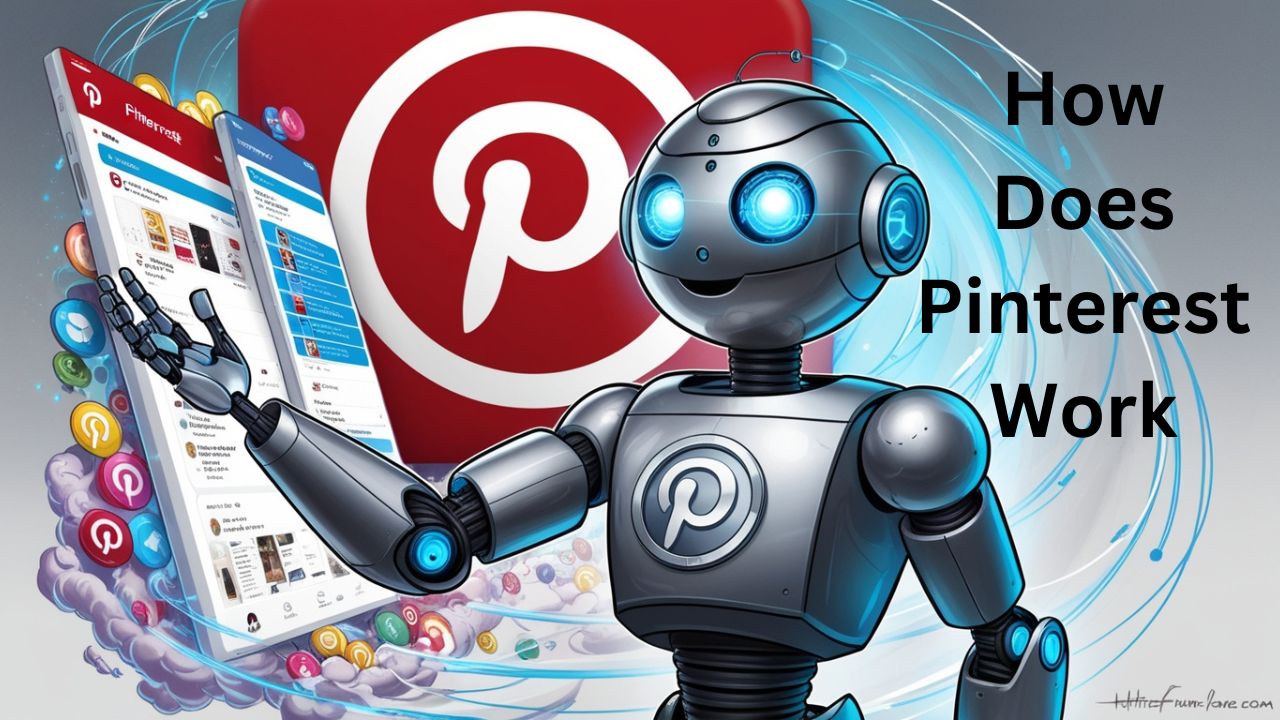What is Pinterest work?
Pinterest is a unique and highly visual platform that allows users to discover, save, and share ideas and inspiration for various aspects of life. From home décor to recipes, fashion tips to travel destinations, Pinterest covers a range of interests. But how does Pinterest work? This comprehensive guide will explore the Pinterest work, providing an in-depth understanding of how to make the most of this popular platform.
Pinterest is a social media platform that functions as a virtual pinboard or bulletin board. Users can “pin” images, articles, and other content to their boards, which they can organize by category. Each pin links back to the source, making Pinterest a powerful tool for discovering and sharing ideas.
Getting Started to Know How Does Pinterest Work
1. Creating an Account
To get started on Pinterest, you need to create an account. Sign up using your email address, Facebook, or Google account. Once you’ve signed up, you’ll be prompted to choose your interests, which helps Pinterest tailor your feed to show content relevant to you.
2. Setting Up Your Profile
After creating an account, set up your profile by adding a profile picture, a bio, and links to your website or social media accounts if you have them. A well-crafted profile can help you connect with other users who share similar interests.

Navigating the Pinterest work
1. Home Feed
The home feed is where you’ll see pins that Pinterest suggests based on your interests and the boards you follow. It’s a continuous stream of content that scrolls through to discover new ideas.
2. Search Bar
The search bar at the top of the page allows you to search for specific content. You can enter keywords or phrases to find pins related to your interests. Pinterest also provides suggestions as you type, making it easier to find what you’re looking for.
3. Boards
Boards are where you organize your pins. You can create boards for different topics, such as recipes, travel destinations, or home décor. Each board can be public or private, depending on your preference.
4. Pins
Pins are the core of Pinterest. Each pin is an image or video that links back to the source. You can save pins to your boards by clicking the “Save” button. You can also add descriptions to your pins to provide more context or information.
5. Following
You can follow other users or specific boards to see their pins in your home feed. Following users with similar interests can help you discover new content and inspiration.
Creating and Organizing Pins
1. Pinning Content
To pin content, you can upload an image from your device or save content from a website using the Pinterest browser button. When you find something you want to save, click the “Save” button to pin it to one of your boards.
2. Organizing Boards
Organize your boards by category to keep your pins easy to find. For example, you might have separate boards for “Healthy Recipes,” “Summer Outfits,” and “Living Room Décor.” You can also create sections within boards to categorize your pins.
3. Adding Descriptions
When you pin content, add a description to provide more context or information. Descriptions can include keywords, tips, or personal notes. Well-written descriptions can make your pins more discoverable in search results.
Interacting on Pinterest work
1. Liking and Commenting
You can like and comment on pins to engage with other users. Liking a pin saves it to your “Likes” section while commenting allows you to share your thoughts or ask questions about the pin.
2. Messaging
Pinterest has a messaging feature that allows you to send private messages to other users. You can share pins, boards, or links through messages, making it easy to collaborate or discuss ideas.
3. Group Boards
Group boards are collaborative boards where multiple users can contribute pins. Group boards are great for planning events, sharing ideas, or working on projects with others.
Leveraging Pinterest work for Business
Pinterest is not just for personal use; it can also be a powerful tool for businesses. Businesses can leverage Pinterest to reach a wider audience and drive traffic:
1. Creating a Business Account
If you’re using Pinterest for business, create a business account. A business account provides access to Pinterest Analytics, advertising options, and other features designed for businesses.
2. Optimizing Your Profile
Optimize your business profile by including a clear profile picture (such as your logo), a detailed bio, and a link to your website. Use relevant keywords in your bio to help users find your profile.
3. Pinning High-Quality Content
High-quality, visually appealing pins are more likely to be saved and shared. Use professional images and clear, concise descriptions to make your pins stand out.
4. Using Rich Pins
Rich Pins provide more information than regular pins and come in four types: app, product, recipe, and article. For example, product Rich Pins includes pricing and availability information, making it easier for users to purchase your products.
5. Engaging with Your Audience
Engage with your audience by responding to comments, liking pins, and collaborating on group boards. Building a community on Pinterest can help increase your reach and drive more traffic to your website.
6. Analyzing Performance
Use Pinterest Analytics to track the performance of your pins and boards. Analytics can provide insights into which content resonates with your audience, helping you refine your strategy.
Pinterest Best Practices
1. Consistent Pinning
Consistency is key on Pinterest. Regularly pinning new content keeps your profile active and increases the chances of your pins being discovered.
2. Using Keywords
Incorporate relevant keywords into your pin descriptions, board titles, and profile. Keywords help your content appear in search results and reach a broader audience.
3. High-Quality Images
Pinterest is a visual platform, so high-quality images are essential. Use bright, clear, and professional-looking photos to attract attention.
4. Vertical Images
Vertical images perform better on Pinterest because they took more space in the feed. The ideal aspect ratio for Pinterest images is 2:3 or 1000 x 1500 pixels.
5. Creating Infographics
Infographics are popular on Pinterest because they provide valuable information in a visually appealing format. Create infographics relevant to your audience and share them on your boards.
6. Seasonal and Trending Content
Pinning seasonal and trending content can increase engagement. Stay up-to-date with current trends and holidays to create relevant and timely pins.
Conclusion
Pinterest is a versatile platform that offers endless possibilities for discovering, saving, and sharing ideas. Whether using Pinterest for personal inspiration or business growth, understanding how Pinterest work can help you make the most of this unique social media platform. Following the tips and best practices outlined in this guide, you can optimize your Pinterest work experience, reach a wider audience, and achieve your goals.
Pinterest’s blend of visual appeal, user-friendly interface, and powerful search capabilities make it an indispensable tool for anyone looking to explore new ideas and connect with like-minded individuals. Embrace the world of Pinterest and let your creativity and inspiration flourish.
